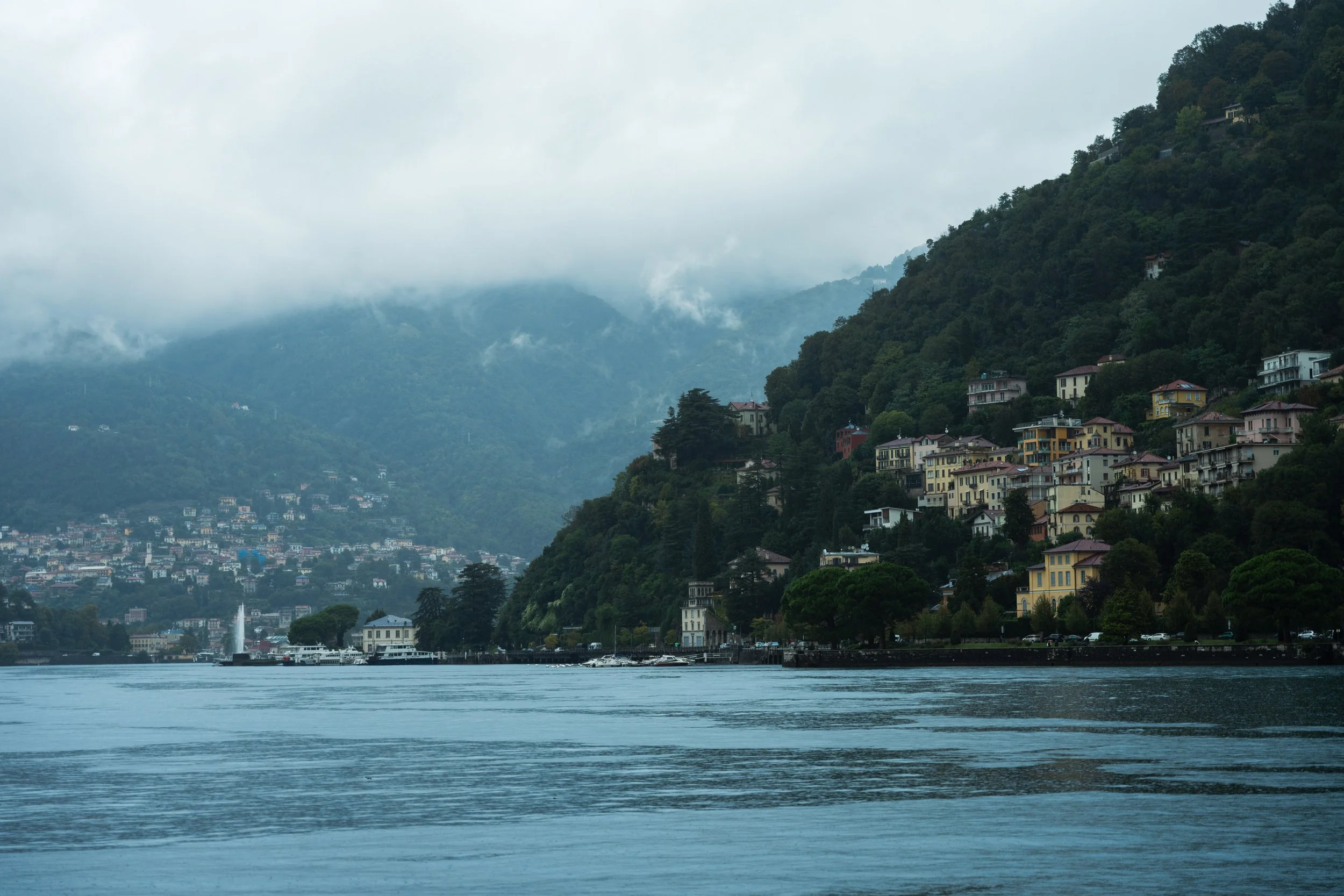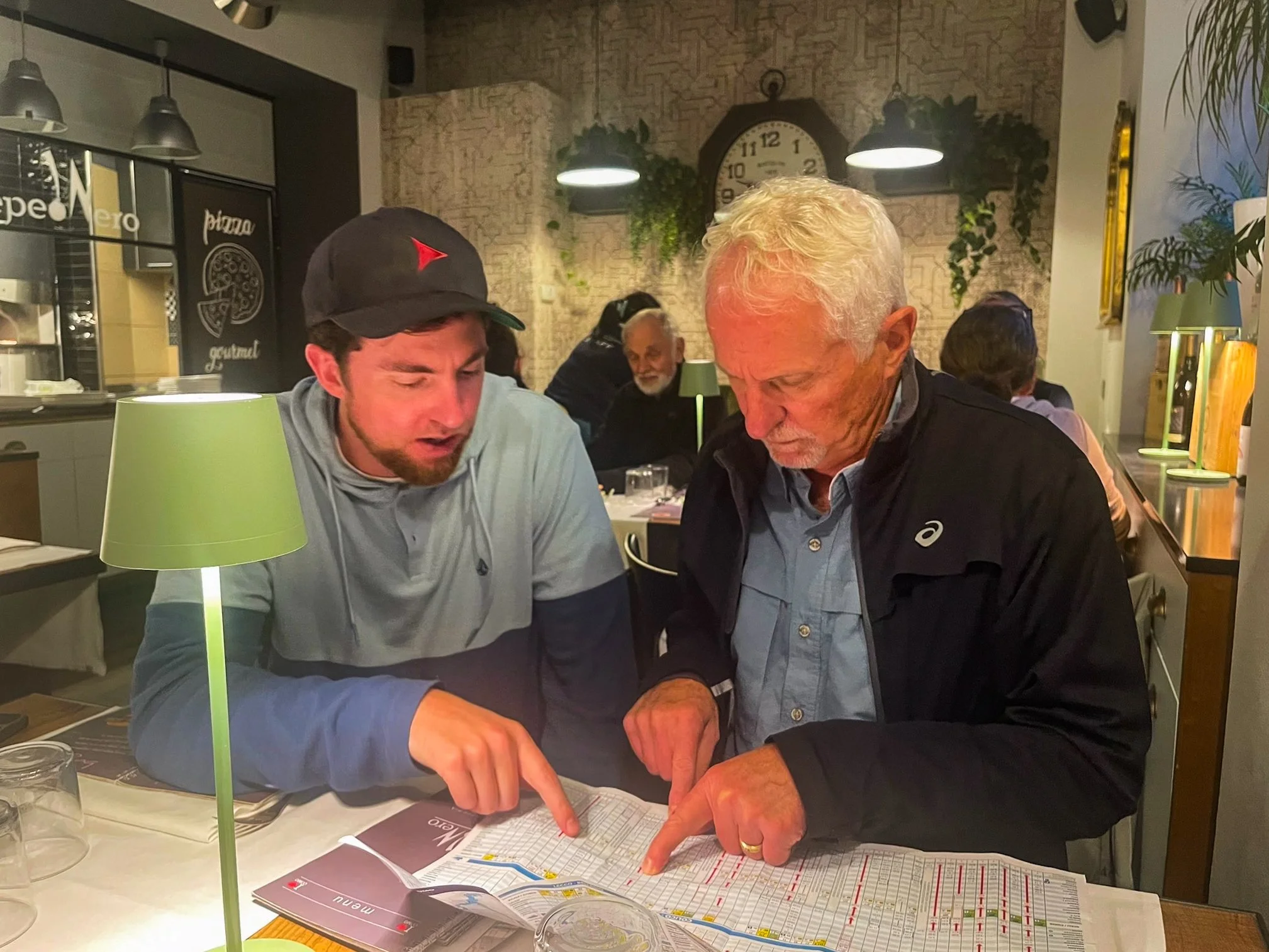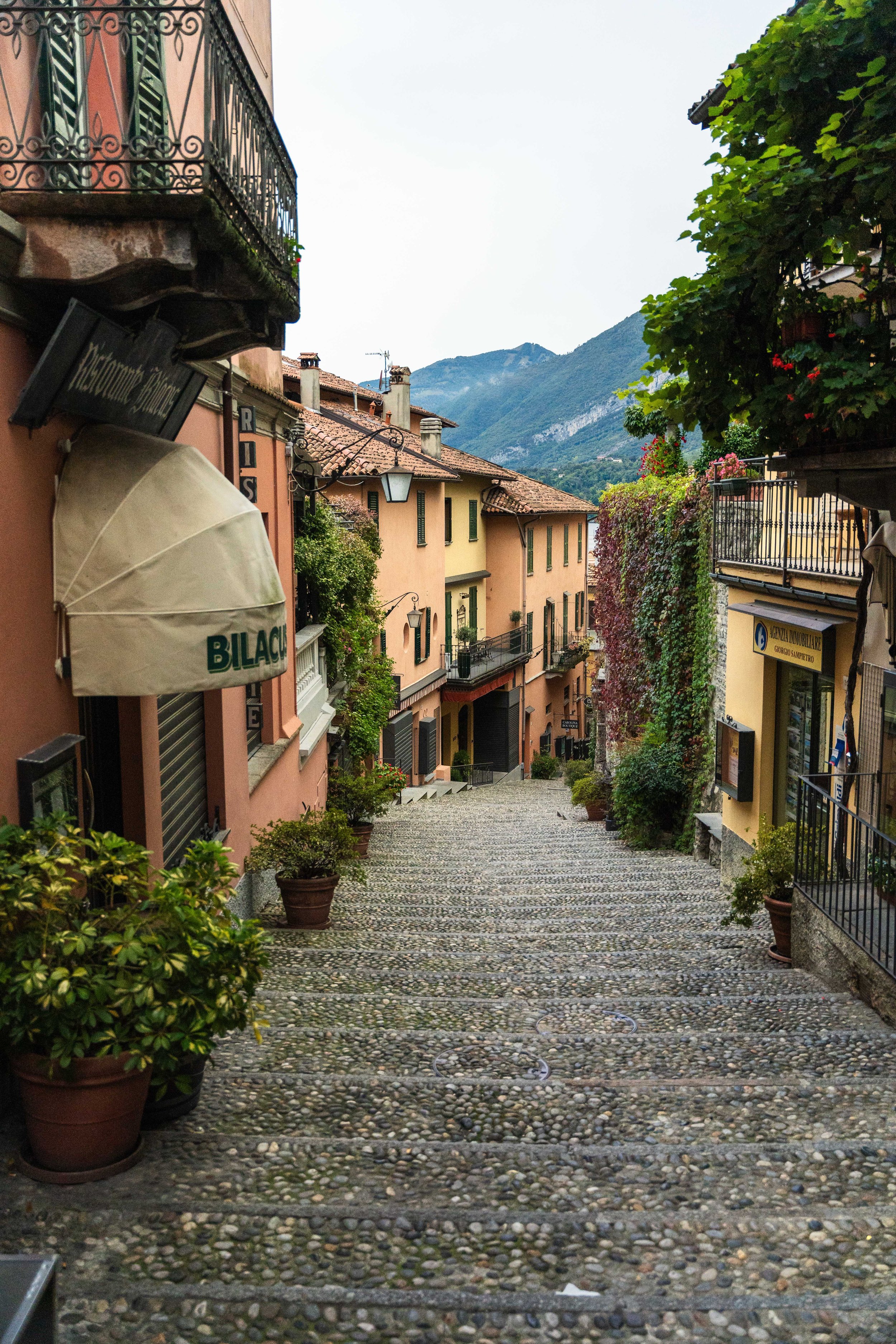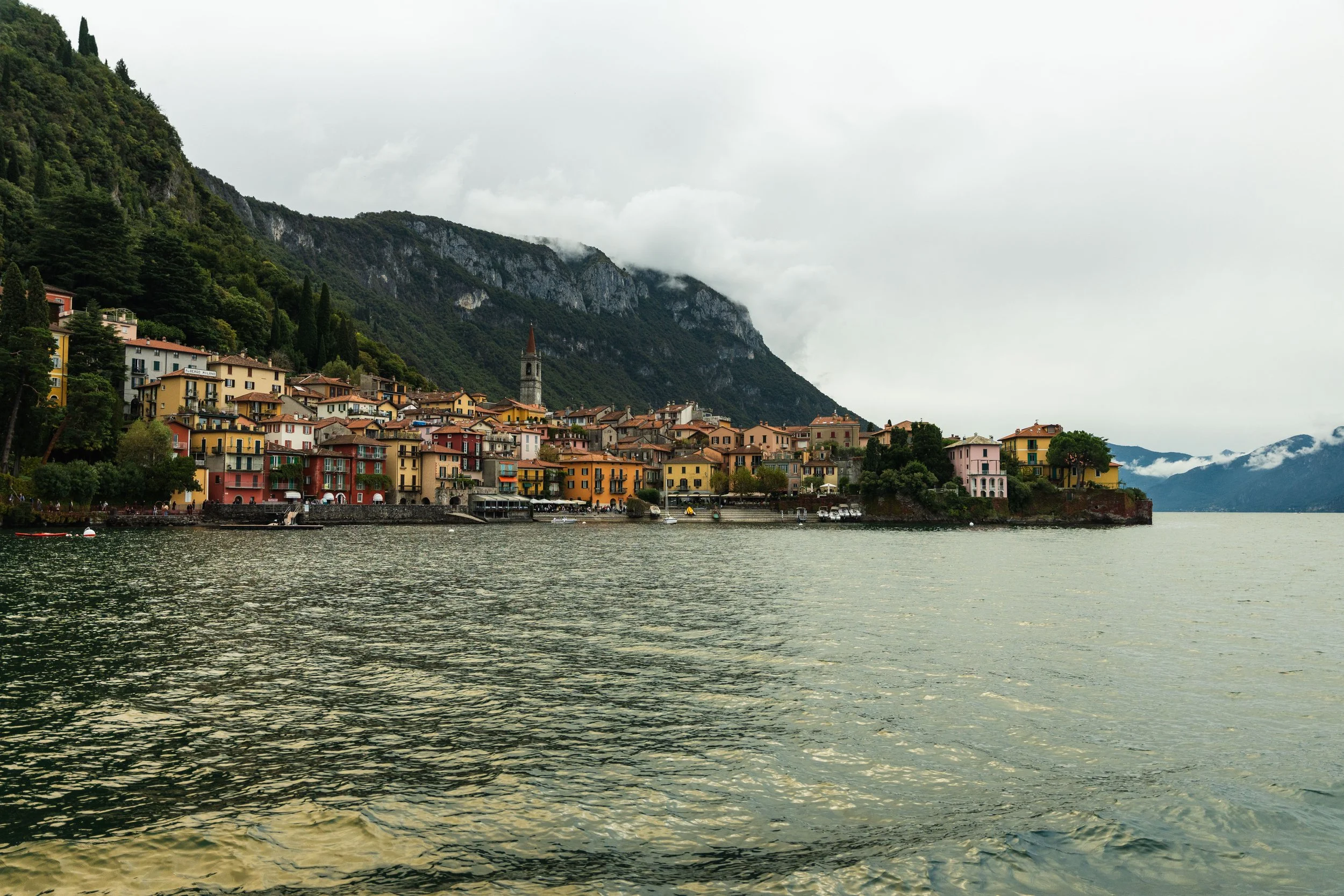My Way Italy Day 3-4: Exploring the Opulence of Lake Como
My Way Italy Day 3: Arriving in Como
Leaving Venice is never easy, but on this day, it felt like the right call. The Seattle-like rain that had misted the canals the day before had morphed into a full-blown Noah’s Ark-style deluge. Walking through Venice’s maze of alleyways is magical — but not when the water is coming at you from both above and below. Even the short trek through the parking lot to our motorcoach left us soaked. But spirits stayed high. We had a new destination ahead: Como, and the promise of a change in scenery.
Overview
-
Bellagio: Often called the “Pearl of Lake Como,” is a charming town in known for its narrow, cobblestone streets and stately waterfront villas offer sweeping vistas, lush gardens, and a relaxing atmosphere.
Giardini di Villa Melzi: A beautifully lakeside garden. Designed in the early 19th century in the English style, featuring elegant sculptures, exotic and native plant species, and serene pathways offering panoramic views.
Varenna: A charming lakeside village characterized by its colorful houses, steep cobblestone lanes, and a romantic promenade along the water making it a popular spot for day trips.
Castello di Vezio: A medieval fortress perched above Varenna on Lake Como boasting stunning panoramic views.
Funicolare Como-Brunate: a historic funicular railway that connects Como to the hilltop village of Brunate, offering panoramic views of Lake Como and the Alps. It remains a popular attraction for tourists and locals looking to experience the scenic ride and explore Brunate’s charming streets and hiking trails.
-
Autogrill: Like most interstates and freeways in the U.S, Italian ones are also have rest stops where you can get gas and a quick snack. However, they don’t compare to Autogrill. The coffee and food easily beat most gas stations I’ve been to. Oil execs in the U.S. could learn a thing or two from the Italians.
Pronobis: After a long day of travel there is no better way to unwind than with a bottle of wine and laughter. This wine bar was a great way to connect with others on our tour and share some tasty vino at the same time.
Bar Il Molo: After arriving in Varenna this restaurant on the shore of Lake Como was stunning. But the real star of the show the Casio e Pepe.
Ristorante Bar Lido: After a full day of exploring Bellagio and Varenna this is a great place to grab a beer or a wine and wait for a ferry back to Como.
Osteria del Buonumore: Located in the heart of Como, this is a cozy, family-run restaurant known for its warm atmosphere and homemade dishes featuring Lombard and broader Italian flavors.
-
When planning your time in Como it is essential to consider which ferry you want to take. You have two options, a fast ferry which will get you from Como to Bellagio in 45 minutes or a slow scenic ferry which takes two hours. We opted for the fast ferry to maximize our time. Tickets are available on a first come first serve basis and can only be purchased the day of.
To best experience Bellagio or Varenna, it is best to arrive around 8 am to be the crowds that will grow throughout the day.
After a five-hour ride through rolling Italian countryside, we arrived in Como, a town as picturesque as a postcard. Nestled at the southern tip of Lake Como and framed by the foothills of the Alps, it felt like stepping into another world entirely. The glacier-fed lake shimmered in shades of silver and slate, mirroring the low-hanging clouds that hugged the mountains. The quiet streets of Como made it feel like time had slowed down. This town has been drawing people in for centuries. During the Roman Empire, it was a crucial trade and military hub, a vital gateway to the Alpine crossings. Today, it draws a different crowd — travelers seeking calm, beauty, and a taste of Italy’s slower side. Even on a cold, drizzly day in October, it was clear why people come here.
We rolled into Como late in the afternoon, about two hours before sunset. After dropping our bags at the hotel, our guide, Cary, gave us the lowdown on the next day’s adventure — a trip to Bellagio and Varenna. She led us to the dock where we could buy boat tickets, and that’s when it hit me: Lake Como is massive. This isn’t some quaint little pond — it’s a winding, glacier-fed giant. Depending on your mode of transport, it takes either 45 minutes on a fast boat or nearly two hours on the slow boat to reach the lake’s northern jewels. With limited time, we chose speed. The fast boat would give us more time to roam the cobblestone streets of Bellagio and Varenna without staring at waves for hours.
That evening, we traded lake views for wine glasses at a local winery. This wasn’t the kind of slick, modern wine bar you’d find in the city. It felt cozy, rustic, and distinctly Italian — the kind of place where wine tastes better because it’s poured by people who love it. Surrounded by the hum of conversation and the clink of glasses, we got to know our tour group. That’s where I met Mark, a retired photojournalist-turned-commercial photographer from the Washington-Baltimore area. Over a few pours of red, we swapped stories about photography — the thrill of capturing the right moment, the obsession with gear, and how every good shot is part luck, part patience. Conversations like these are why I love traveling. You come for the views, but it’s the unexpected connections that stay with you. Wine helps, too.
Taylor Tip
To maximize your time, be sure to get an early start since fast boat ferry rides are on a first come first serve basis and can’t be bought in advance.
“Lake Como is my favorite. It offers the best mix of accessibility, scenery, and offbeat-ness, with a heady whiff of old-world aristocratic-old-days romance.”
My Way Italy Day 4: Full Day in Como
We woke up before dawn, the kind of early where the world is still hushed and the air feels sharper. A quick croissant and an Americano later, we were off to the ferry station. Here’s the deal with Como ferries — tickets are first-come, first-served, and if you wait too long, you’ll be elbowing through crowds like it’s Black Friday at Best Buy. But at this hour, it was just us and a handful of early risers. The plan was simple: get to Bellagio before the crowds do. It’s a town that’s too pretty for its own good, and by mid-morning, it’s swarmed with tourists like seagulls on a dropped sandwich.
We boarded the fast boat at dawn, and for a while, it felt like we’d stumbled onto a local secret. Most of the passengers weren’t tourists — they were residents and commuters, people whose lives didn’t revolve around sightseeing. They sipped coffee, tapped on their phones, and stared out at the lake with the indifference of people who see it every day. Meanwhile, I sat glued to the window like a kid on a school field trip, watching villas fit for the rich and famous. These weren’t just houses — they were fortresses of wealth and seclusion, retreats for the wealthy to unwind. The sun was just starting to rise, and for a moment, it felt like the whole world had been designed just for this view.
Exploring Bellagio
We arrived in Bellagio around 8:30 a.m., just as the town began to stir. From the boat, it felt like stepping into a Wes Anderson film — everything was perfectly arranged with pastel-colored buildings, manicured gardens, and terraced walkways climbing the hillside with geometric precision. It was all too perfect, like a postcard brought to life.
Once ashore, the town felt like it was moving in slow motion. Locals sipped espresso at a café, a woman walked two perfectly groomed poodles, and shopkeepers opened their doors, sweeping stoops and arranging displays of goods for sale. We wandered through the narrow alleyways, taking in the quiet charm before the crowds arrived.
It didn’t take long to see why Bellagio is called the "Pearl of Lake Como." Crisp autumn air, colorful facades, and stillness that feels impossible to find back home. It’s not a place to "do" things — it’s a place to pause, breathe, and be present. For centuries, people have come here to escape the world, and for a moment, it felt like we’d done the same.
The Gardens of Villa Melzi d’Eril
After wandering through the postcard-perfect charm of Bellagio, we found ourselves drawn to Villa Melzi d’Eril’s legendary gardens. Built between 1808 and 1810 at the behest of Francesco Melzi d’Eril — a man who, let’s be honest, knew how to summer in style — the villa was his personal retreat until his death in 1816. It’s the kind of place that makes you question every decision you’ve made about where you live and why you don't own a villa on Lake Como.
Getting there is a breeze — just a quick 10-minute stroll from the ferry terminal — but once inside, the world outside might as well not exist. Nearly 24 acres of meticulously curated gardens unfold before you like a living museum. It’s not just pretty flowers and tidy hedges either. We're talking towering exotic flora, native Italian blooms, and, because why not, a few ancient Egyptian statues dropped in for good measure. It’s the kind of grandeur that requires a small army of gardeners to maintain — and you can practically feel their invisible presence in every perfectly pruned branch.
But it’s not the grandeur that sticks with you. It’s the quiet. The kind of quiet that sneaks up on you while you’re walking along the lakefront path. It’s a stillness that presses pause on the mental chaos of daily life. For a moment, I stopped thinking about everything waiting for me back in Los Angeles — the deadlines, the noise, the grind, the traffic — and just existed in that space. I felt like I was seeing things more clearly, maybe even seeing myself more clearly. It’s funny how a well-placed cypress tree and a breeze off the lake can do that.
After wandering through the serene gardens of Villa Melzi, we made our way back to the ferry terminal in Bellagio. But the town we’d left that morning — quiet, calm, and postcard-perfect — had transformed. Tourists poured in with every ferry, crowding the narrow alleyways and filling every cafe chair in sight. It felt like we had accidentally left the “golden hour” of travel and stumbled into peak season. I was suddenly grateful we’d come in October because if this was the off-season, I can’t imagine what July looks like.
The ferry to Varenna arrived after a short wait. It wasn’t like the fast boat we’d taken that morning, where movement was limited and views came through narrow windows. The ferry was different — more space to move, more time to breathe. The ride took a little over 30 minutes, but it felt longer in the best possible way. It was a chance to slow down and actually see Lake Como from the water. As the crisp October air rushed past, I thought of Ferris Bueller’s famous line, "Life moves pretty fast. If you don't stop and look around once in a while, you could miss it." The ferry ride was exactly that — a pause, a chance to look around. The mountains rolled by like slow-moving waves. It was a kind of magic you only notice when you’re forced to slow down.
By the time we arrived in Varenna, I realized Bellagio might be the “Pearl of Lake Como,” but Varenna? Varenna is the "Hidden Jewel in the Rocks." It didn’t announce itself with fanfare. It just existed in quiet, effortless beauty. From the moment we stepped off the ferry, I felt like I’d walked straight into the pages of a romance novel — ivy-draped villas with balconies hanging over the water, narrow walkways leading to hidden courtyards, and colors so rich they practically hummed. Terracotta reds, sun-bleached yellows, and bold Mediterranean blues splashed across the facades like an artist had gone a little wild with the palette. For a photographer, it was a feast of textures and color — every street, every alley, every unexpected turn offering another shot I didn’t want to miss.
After a while, we found a quiet spot to sit by the lake — a small, no-frills restaurant with a front-row view of the water. I wasn’t expecting much, but then I ordered the carbonara. And I’m not exaggerating when I say it was one of the most memorable meals of my life. Creamy, perfectly coated noodles with just the right amount of crispy bacon and cracked black pepper — it was a masterclass in simplicity done right. It wasn’t just food — it was the feeling of being in a place that understands how to make simple things unforgettable. And that’s Varenna in a nutshell.
Exploring Vezio Castle
After a hearty Italian lunch (and far too much carbonara), we set off for Vezio Castle, perched nearly 600 feet above Lake Como. With a belly full of pasta, I had a brief moment of doubt — the kind of regret Michael Scott must have felt after carbo-loading before his 5K for rabies awareness. But we opted for the steeper, shorter trail.
After about 30 minutes of hiking, we reached the top, and any lingering regrets about the climb vanished. Vezio Castle isn’t just a cool stone fortress — it’s a front-row seat to one of the most breathtaking views in all of Lake Como. You get a full panoramic sweep of the lake, with the jagged Alps cutting into the skyline like teeth.
The castle itself has been standing guard for nearly 1,000 years, originally built as a watchtower to monitor lake traffic. Back then, spotting an incoming boat early could mean the difference between welcoming a guest or preparing for a fight. Today, it’s mostly tourists watching other tourists float by on ferries, but the strategic vantage point is undeniable. For a photographer, it’s a dream location. Every angle offers a new shot — dramatic landscapes, moody medieval walls, and the kind of endless views that make you want to sit still for a while.
Views like this have a way of making you forget the climb.
After making our way back to Varenna, something magical happened — the clouds broke and the sun poured through, revealing Lake Como in full technicolor. Earlier in the day, it had been beautiful in that quiet, brooding way, like a black-and-white film with perfect contrast. But now? Now it was like someone cranked up the saturation. The water turned a shade of blue so vivid it felt surreal. The distant mountains, once hazy silhouettes, sharpened into crisp ridgelines. Everything felt alive. The air warmed, faces lit up, and the collective mood of the town shifted from contentment to pure, unfiltered joy. People sat along the promenade, faces tilted to the sun like sunflowers, while the steady rhythmic lapping of waves against the seawall played like nature’s white noise machine. This wasn’t just a view — it was a feeling. The kind that settles into you, soft and slow, like you’ve been holding your breath all day without realizing it.
I get it now. I get why this place has been a retreat for Milan’s rich and powerful for centuries. It’s not just the beauty — it’s the space. Space to pause. Space to breathe. Space to think about something other than the next meeting, the next email, or the next obligation on a never-ending list. You can’t help but reflect here. And while I’m no Milanese merchant or Renaissance lord, I felt it too. I’m just a working video editor with a busy calendar, but on that lakeshore, I had space to think about what I want next. Not just in travel, but in life. It’s wild how a view can do that. But Lake Como is sneaky like that. It doesn’t shout, it whispers. And if you’re quiet long enough, you hear it.
On the fast boat back to Como, I watched the shoreline drift away and felt a wave of gratitude hit me harder than the lake breeze. This place has a way of getting under your skin. It’s not just the views (though they don’t hurt) — it’s how it makes you feel. There’s something inherently romantic about Lake Como, and I don’t mean in the “candlelit dinner for two” sense. It’s romantic in the “big, sweeping, cinematic, life feels bigger than it is” kind of way. Every turn of the head reveals another perfect shot — villas framed by cypress trees, pastel houses clinging to cliffs, and water so still it could be a mirror. For a photographer, it’s a place that leaves you chasing the next shot long after you’ve told yourself “just one more.” One and a half days wasn’t enough — but it was better than nothing. Some places stay with you. Lake Como isn’t just a place you visit — it’s a place that visits you back.
Taylor Tip
Whatever it is, the way you tell your story online can make all the difference.






















